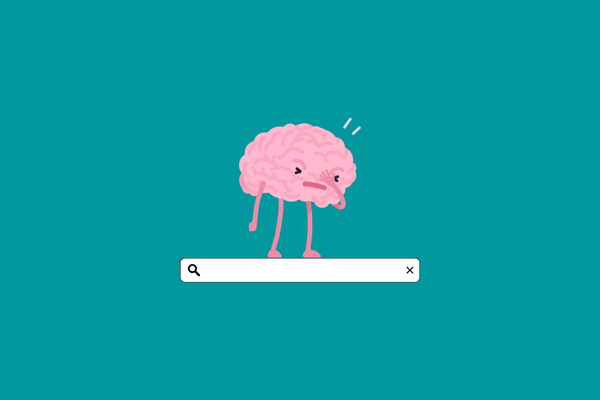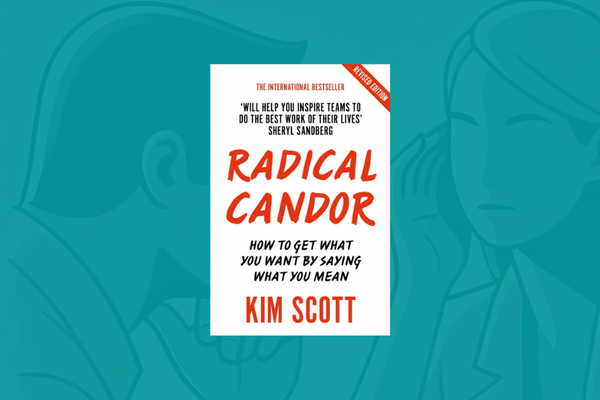Cornell Note Taking Method - Introduction and Template
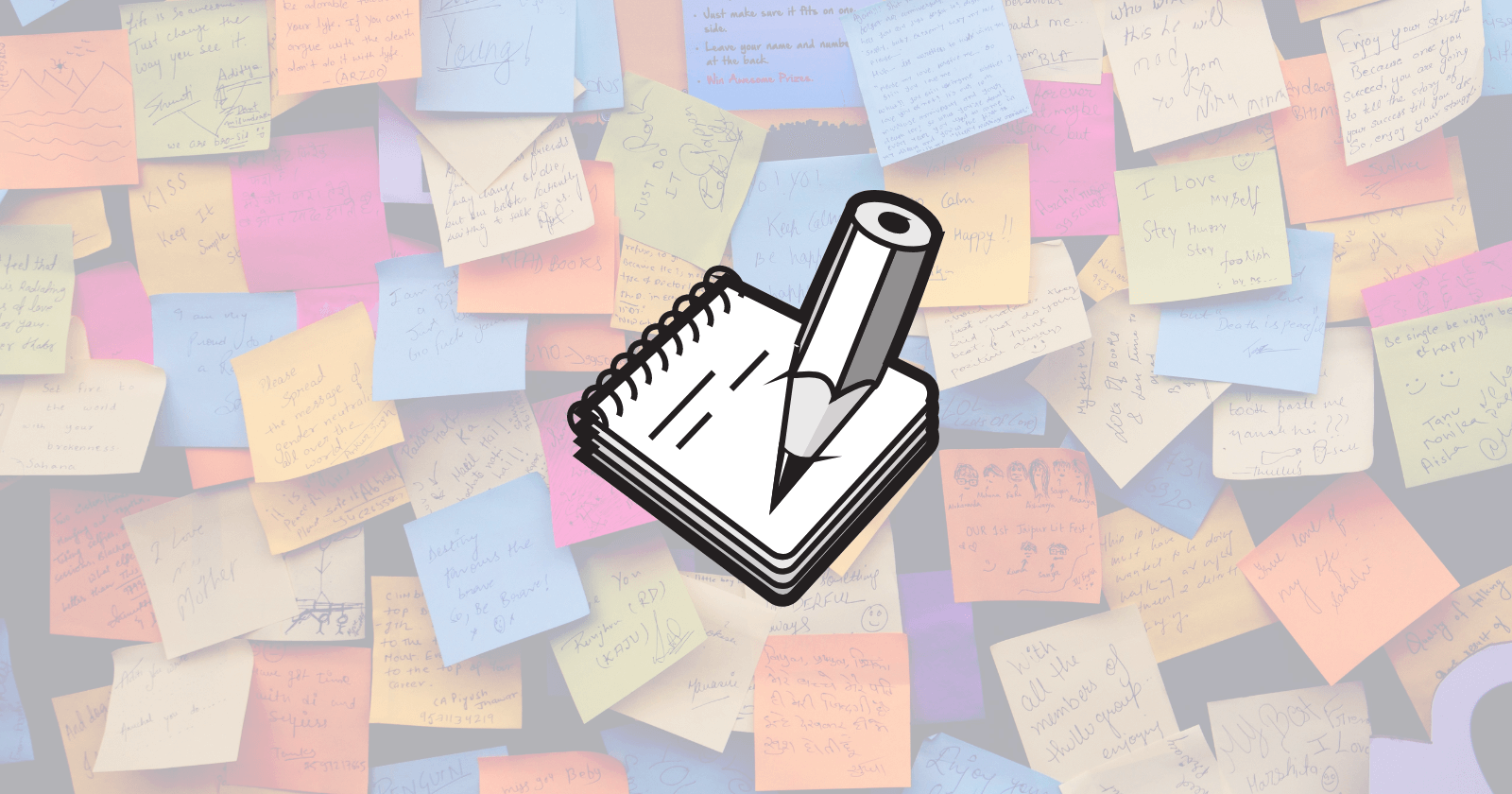
Good notes can make our learning more effective. Lesser-known note-taking techniques and learning methods are also useful when preparing for university exams, or just mastering the curriculum of an online course.
Why are we talking about taking notes when others previously jotted down a piece of paper works perfectly.
If your goal is just to accomplish a goal or to pass exams without knowledge, then this article is not for you.
There may be a place for mindless learning in our lives, but topics that build on top of each other are not that. If we want to acquire knowledge not just pass an exam but to use it then we need to have effective tools to create memorable notes.
The Cornell Note Taking Method can help us with this challenge.
We will discuss the following:
- What is Cornell Note Taking Method?
- How can we use the Cornell Method to take better notes?
What does a good note like?
Concise and short
After reviewing a good note, you will have a comprehensive picture of the topic. The note is not a literal description of the curriculum, but a highlight of the essential elements without anecdotes. For me, a usable note is concise, rarely contains whole sentences outside of concepts.
It can be understood later
If you later have a goal with the topic of the note, you may want to create documentation that can be used later. While after a lesson we know exactly what the less elaborate points in the note refer to, in a few months we will no longer be able to fill in the missing points in the document from our short-term memory.
Helps to understand the material
After mastering a good note-taking technique, we will already master certain parts of the material during the creation of the note. A good note encourages you to explore connections and is an integral part of the learning process.
Digital note or paper note?
According to a 2014 study, while students taking notes with a laptop take longer notes, their peers who write on paper can recall the learnings better. We type faster than we write, so we take an almost literal note using our laptop.
If we grab a pen or a pencil, we nail it much more slowly, which is why we think twice about how to formulate what is said. We shorten, describe the gist, and rethink the really important thoughts. This process helps you interpret the material while making a note. Although a paper-based note is more effective in terms of learning methodology, a digital note also has many advantages.
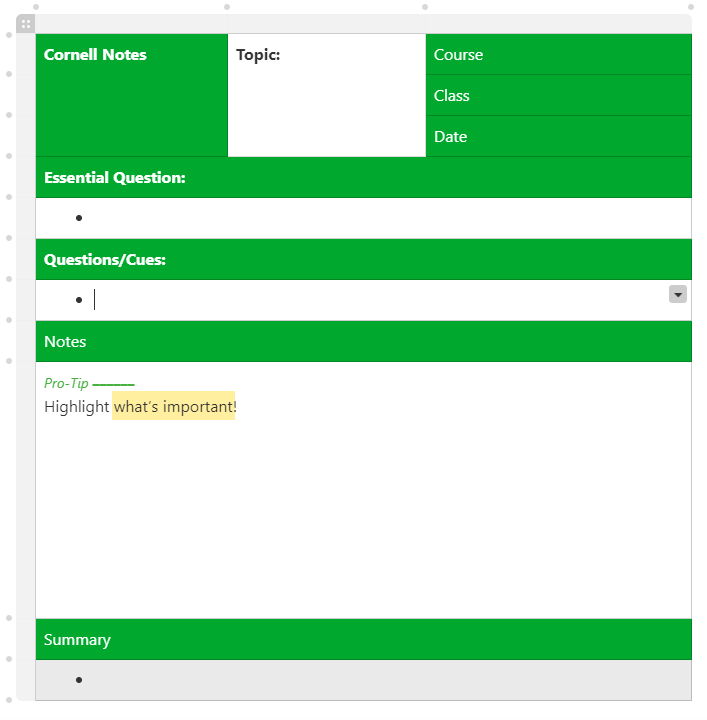
If you come up with one or two important details, you can easily add extra lines to your digital note, while on paper it is difficult to insert thoughts so that the note remains transparent.
A digital note is sustainable and saves space. My notes drawn on paper lie back and forth in the depths of the wardrobe, which is why I rarely use an old note. With a few clicks with digital notes, I can see material from entire semesters at once, use what I have described, copy and paste from documents.
Both types of notes have their advantages and disadvantages, but you can use them together.
You can maximize the convenience factor of digital notes and the learning effect of paper notes by scanning paper-based notes or explaining the digital note on paper.
Note-taking techniques
Make it with a pen or type it with a keyboard, there are still countless ways to record what you have learned. The best-known note-taking technique is the sketchy method that most people start using automatically.
In this article, we will touch on mind maps briefly, and we will talk mostly about the possibilities of the Cornell method.
Classic sketch-based note
We throw each thought on the paper as a separate point, starting the details further, leaving space between the topics. Almost everyone takes notes like this. It would be a lie to say that I have in my hand some better method of beating traditional note-taking by miles.
I have always made such notes, and I only became acquainted with other techniques when the primary goal of taking notes and learning became to acquire knowledge that could be put into practice instead of passing a test.
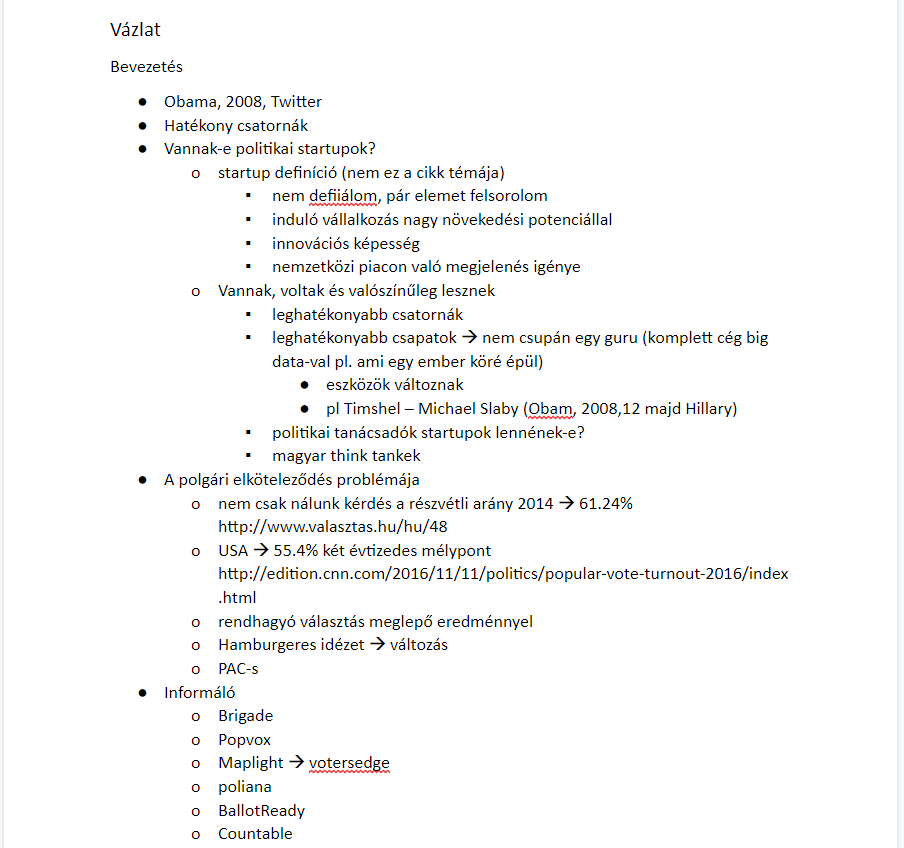
The sketchy note is simple, easy to follow, and great to learn from. However, if you just want to get a comprehensive picture of the topics covered in the notes, you need to read the whole thing, which takes an unnecessarily long time.
In the sketch-based note, although the arrangement of each block is logically formed, nothing indicates the relationship between the blocks.
It is a good idea to replace or supplement the sketch-based note with extra methods that help you process the topic and include a summary that can be read quickly in a short time.
Mind map
The material of a multi-hour lecture can hardly be effectively recorded after hearing using a mind map, which we can mostly agree on. I also look at mind maps not as a note-taking technique, but as a method to help learn what is being said.
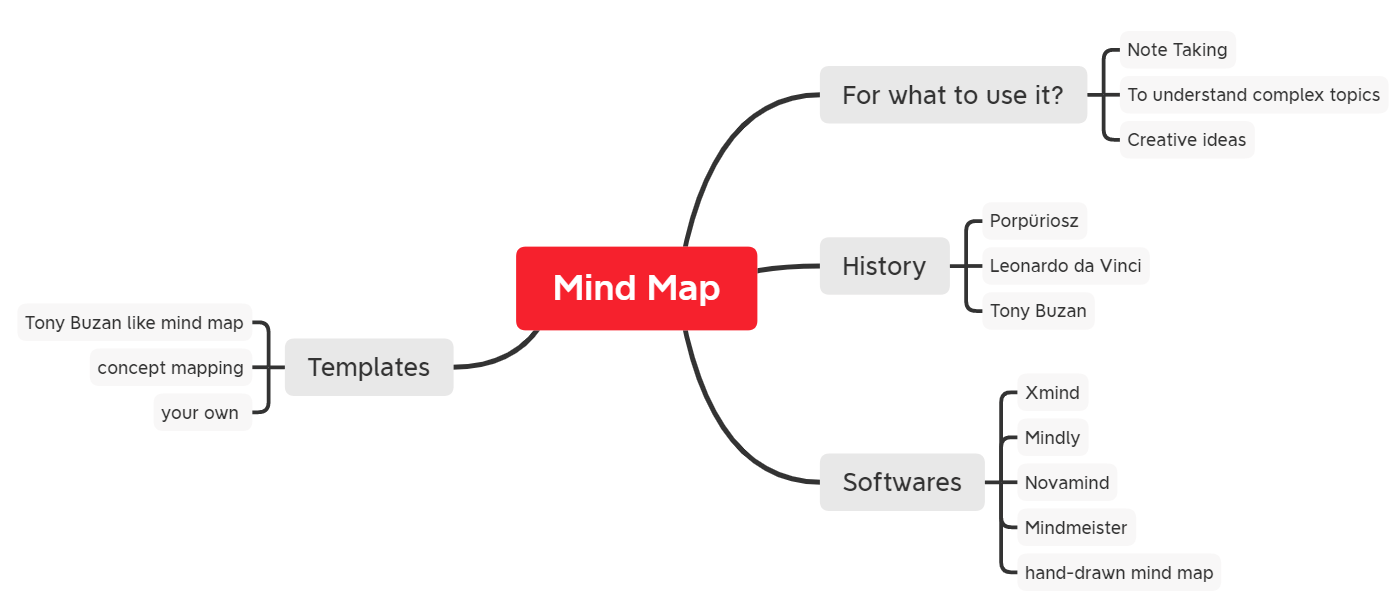
To this day, my favorite method is to draw a mind map using sketch-based notes. With this, I discover logical connections that the dot-dot-comma note would not have highlighted and looking at the mind map, I will soon have a comprehensive picture of the topic.
The original note also remains indispensable for learning, but a good mind map can remedy the shortcomings of the classical note.
I’ve written a hands-on article about the mind mapping process, templates, and software before, so we won’t go into detail about the technique now.
Cornell method
For me, the transition between a sketch note and mind maps starts with the Cornell method, which is actually neither a sketch nor a mind map, but it provides a solution to the shortcomings of both methods.
The note-taking technique was developed by Professor Walter Pauk at Cornell University. Hence the name Cornell Method. The great strength of the technique is that it prepares the processing of the curriculum by taking notes in class.
The Cornell Method in Brief: Divide an A4 sheet into three parts. Write the lesson notes on the right, the margin on the left will be the place of recall, while we will provide space for the summary at the bottom of the page. In the class, lecture, fill in the note column, and then after class, the recall and summary sections.
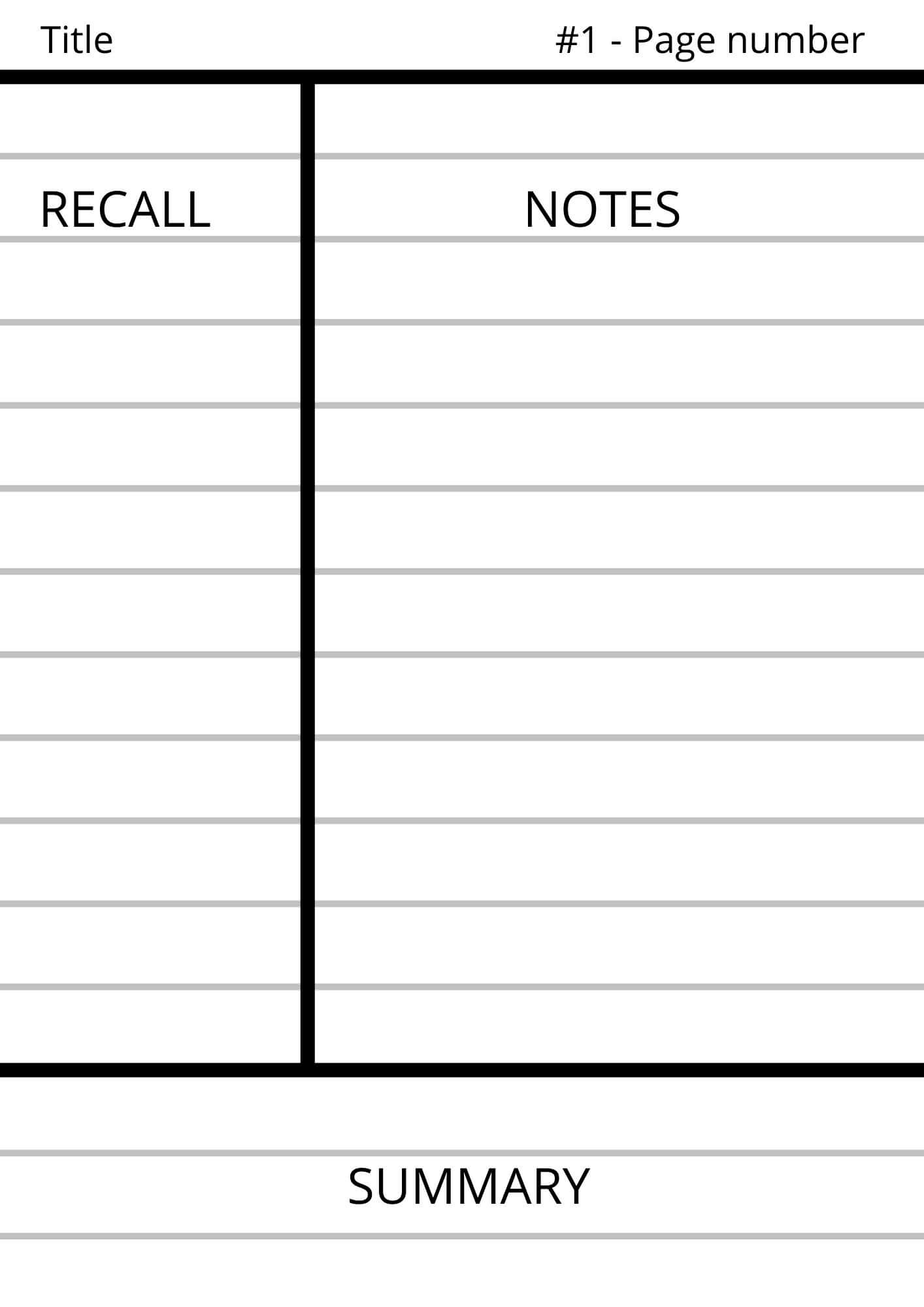
In practice, therefore, the Cornell method does not differ from the traditional note-taking used by many of us. The essential difference is that we provide space for the parts that help to process the curriculum, which will later become elements of the body of the note.
The Cornell method and PQ4R
After making the note about the lecture, the blanks are filled in using the PQ4R method.
Question - Question
Ask questions about the subject of the note. Ask about the essence of what you have learned, try to find connections, and also ask for details. The first step of the PQ4R method can even be thought of as a no-stakes exam where we don’t yet need to know the answers to the questions.
Read
Let’s read the note while looking for answers to our prepared questions. In this case, instead of mindlessly learning, we begin to see the material in context and we can make connections in our minds between the parts of the note.
Reflect
As a third step, we try to interpret what we read, look for logical loopholes, incomplete arguments, and see what details are still missing from the note. During the reflection, we need to see what we have learned in context.
Recite
After the reflection, let's say what we have learned. During the recitsation, try to identify keywords that summarize the essence of the note well. These keywords, after short sentences, are recorded in the left margin of the Cornell note, the place of recall.
Review - Summary
As a final step, we summarize the essence of the note in a few sentences and write it down at the bottom of the page. The summary should give a comprehensive picture of the essence of the note without reading what has been written in class.
This section will come in especially handy when repeating.
Tips for using the Cornell Method of Note Taking
- Use date and pages numbers on the notes. Since the Cornell method is also a great tool for repetition, it is important that our notes stay in order.
- Put it succinctly! As we have less space than in the case of traditional notes, it is worth using simple sentences for the sake of clearness.
- Use white space and make it easy to read! During PQ4R, you can easily think of an important detail that was not originally written down. It’s a good idea to leave room for similar additions so that your note doesn’t become crowded later.
Does the Cornell method work?
Post-auditory notation for the Cornell method does not differ significantly from simple point-to-point note-taking. The essential difference is the processing of the note and its transformation into a learning aid that can be used later.
In terms of knowledge acquisition, I don’t feel much more effective about the Cornell method than simple notes. Most of us don’t brainstorm our notes anyway but learn the material in some way similar to PQ4R, such as recalling guided questions, or questioning.
If learning in your case has so far simply consisted of reading a note, using the Cornell method can be a big step forward.
The biggest benefit of Cornell notes for me is that due to the better structure, it is more efficient to repeat what I have learned, which saves me a lot of time. Most of the time, I don’t forget the knowledge I learned from the sketchy notes in a short time because I would have been learning mindlessly just for an exam, but because I simply didn’t revisit the learnings later.
Reading a traditional note takes a long time, while in the case of a note made using the Cornell method, even going through the summary section can revive what you have learned.
The Cornell method is not a learning elixir either, but it is a much more effective alternative to sketchy notes and mindless learning.
If you want to become more effective, remember more, and use what you have learned effectively to achieve your goals, my following articles may also be helpful to you:


